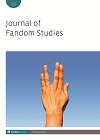
Full text loading...

The COVID-19 pandemic has not only resulted in millions of deaths worldwide but also ravaged the mental health of countless other individuals by the fear and isolation it has cultivated. This phenomenological case study explores how the Sid City Social Club, a virtual fandom community born from the COVID-19 pandemic, provided a social outlet that participants claimed helped buffer against these negative mental health outcomes of the pandemic. Key to participants’ experiences were the diverse identities and interests of the members of the community and the sense of support they offered their peers throughout the multiple online mediums used by the club. Special emphasis is given to the uniqueness of participating in such a virtual fandom community amidst a historical pandemic and immense global uncertainty. This study gives insight into the benefits of this type of virtual community for those experiencing social isolation for a myriad of reasons, both now and in the future.

Article metrics loading...

Full text loading...
References


Publication Date:
https://doi.org/10.1386/jfs_00059_1 Published content will be available immediately after check-out or when it is released in case of a pre-order. Please make sure to be logged in to see all available purchase options.